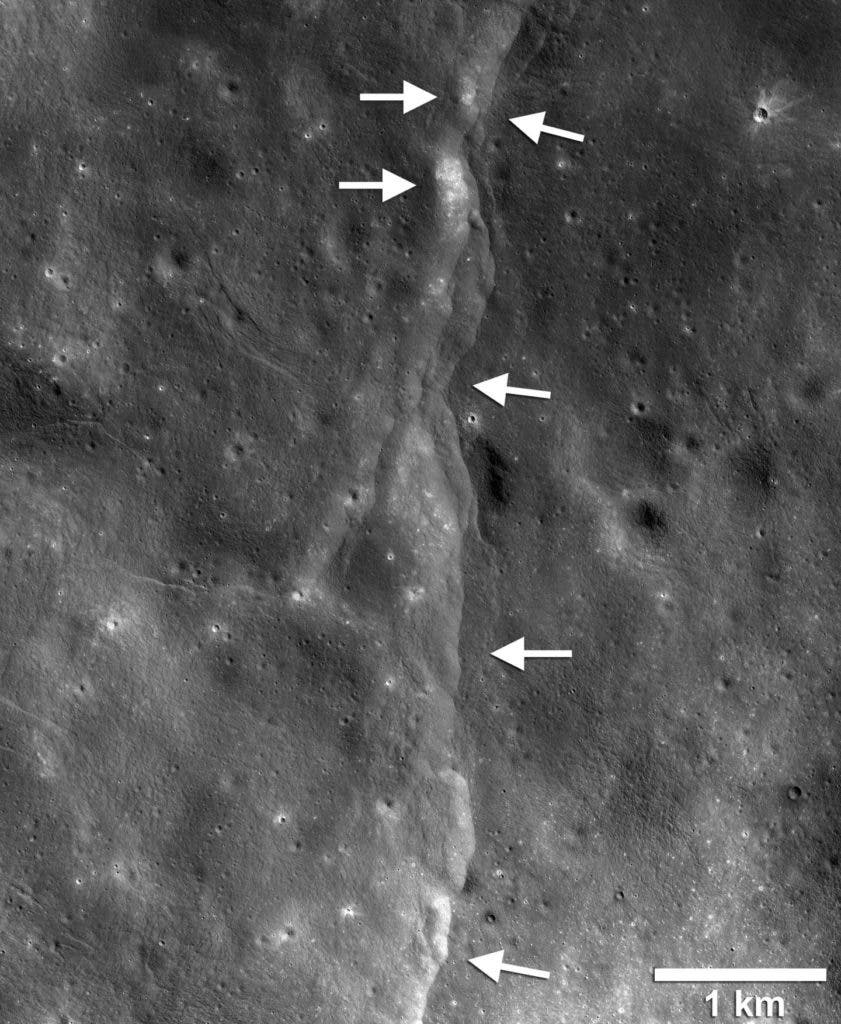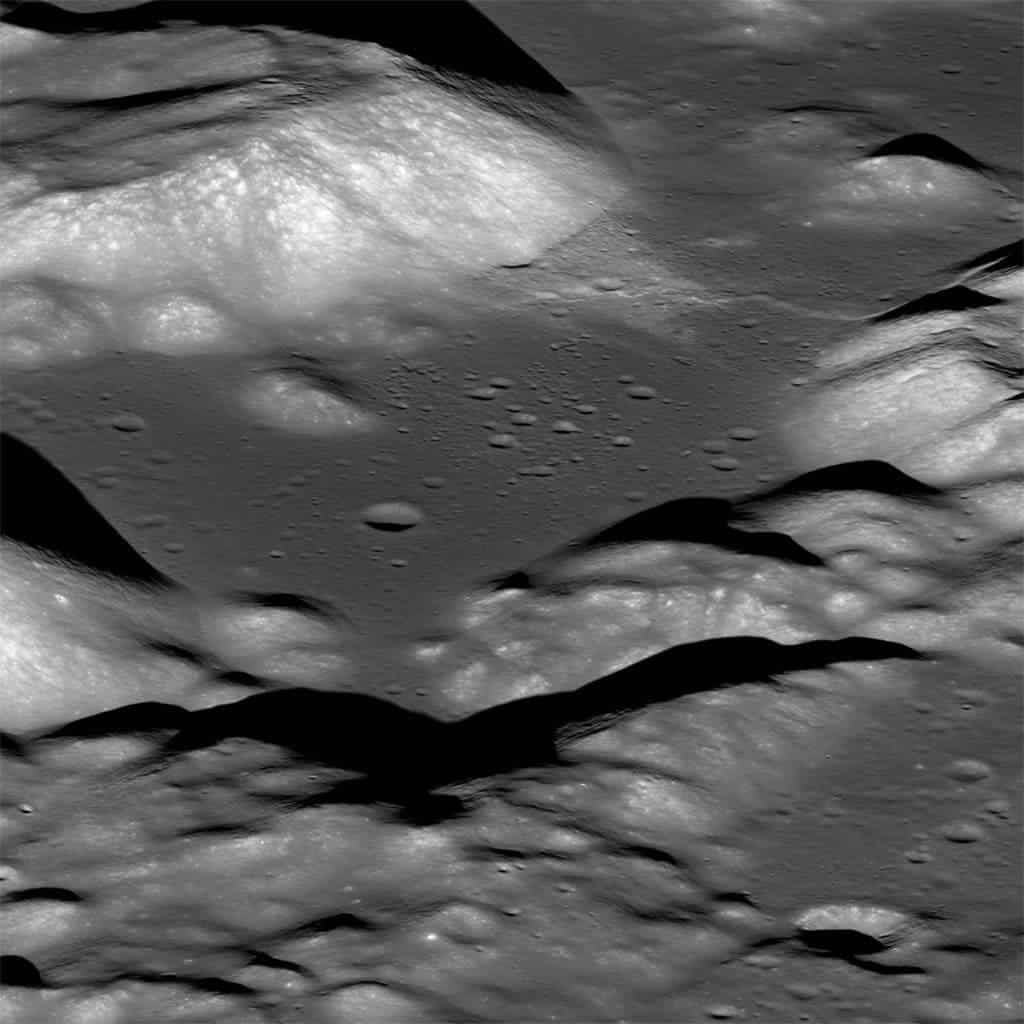Like a grape that wrinkles to produce a raisin, the moon is shrinking day by day as it interior cools. In the process, the lunar crust breaks, producing thrust faults — a type of fault where ground from one section of the crust is pushed up over an adjacent section. Now, scientists have used images NASA’s Lunar Reconnaissance Orbiter (LRO) and seismic data from the Apollo missions, finding that the moon’s shrinkage is also producing moonquakes around these thrust faults.

A shocking study
Since 2009, the LRO mission identified more than 3,500 thrust faults on the moon. Some of these images showed evidence of landslides and boulder falls at the slopes of thrust faults, also known as scarps. These features appeared relatively bright in the images, suggesting that they were produced recently. Normally, weathering darkens material on the moon’s surface in time. What’s more, the constant rain of micrometeoroids should have erased these tracks, suggesting that they are relatively fresh.
In the 1960s and 1970s, astronauts placed five seismometers on the moon’s surface. The Apollo 11 seismic instrument listened for rumbles in the moon’s crust for only three weeks, but subsequent missions recorded 28 moonquakes. These were very shallow quakes ranging in magnitude from 2 to 5. To Nicholas Schmerr, an assistant professor of geology at the University of Maryland, this data looked very similar to that of earthquakes produced by tectonic faults.
Schmerr and colleagues superimposed the epicenters for moonquakes recorded by Apollo-era seismometers with LRO imagery of thrust faults. They found that at least eight of the moonquakes matched almost perfectly with scarps, suggesting that they were produced by genuine tectonic activity, rather than processes deep within the moon’s interior or from asteroid impacts.
“We found that a number of the quakes recorded in the Apollo data happened very close to the faults seen in the LRO imagery,” Schmerr said in a statement. “It’s quite likely that the faults are still active today. You don’t often get to see active tectonics anywhere but Earth, so it’s very exciting to think these faults may still be producing moonquakes.”
The authors used their model to produce “shake maps” based on predictions of where the strongest shaking should occur, given the size of thrust faults. Six of moonquakes occurred while the moon was at or near its apogee, which is the point where the moon is farthest away from Earth. This suggests that tidal forces from Earth’s gravity stress the moon’s crust, making fault generation more likely.

“We think it’s very likely that these eight quakes were produced by faults slipping as stress built up when the lunar crust was compressed by global contraction and tidal forces, indicating that the Apollo seismometers recorded the shrinking moon and the moon is still tectonically active,” said Thomas Watters, lead author of the research paper and senior scientist in the Center for Earth and Planetary Studies at the Smithsonian Institution in Washington.
These stunning findings could have a huge impact on how scientists view the moon from now on. They suggest that the moon may still be tectonically active and raise questions regarding its evolution. According to the leading lunar formation theory, the moon formed roughly 4.5 billion years ago after a planetary-sized body collided with early Earth. Many believe that any internal heat the moon might have had must have escaped a long time ago due to its small size relative to Earth. These new findings, however, suggest that there might still be some “steam” left to blow. Somehow, the moon managed to remain tectonically active after 4.51 billion years — and we don’t know how yet.
And considering Jeff Bezos’ recent grand plans for establishing a human presence in the solar system, including the moon, these new findings published in Nature Geoscience suggest that we ought to prepare for quakes, besides the numerous other perils.
“For me, these findings emphasize that we need to go back to the moon,” Schmerr said. “We learned a lot from the Apollo missions, but they really only scratched the surface. With a larger network of modern seismometers, we could make huge strides in our understanding of the moon’s geology. This provides some very promising low-hanging fruit for science on a future mission to the moon.”


